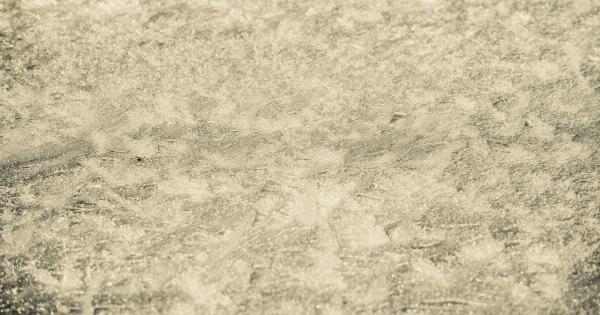Have you ever experienced your toes or fingers feeling cold and numb, even when the rest of your body is warm? This could be a symptom of Raynaud’s Syndrome, also known as Raynaud’s Disease or Raynaud’s Phenomenon.
This condition affects the blood vessels in your toes, fingers, ears, and nose, causing them to narrow and reduce blood flow to these areas, which results in the characteristic feeling of coldness and numbness.
What Causes Raynaud’s Syndrome?
Doctors aren’t entirely sure what causes Raynaud’s Syndrome, but it is thought to be related to problems with the nerves that control the blood vessels in the affected areas.
In some cases, Raynaud’s Syndrome is a secondary condition, meaning that it is caused by an underlying medical condition, such as:.
- Lupus
- Scleroderma
- Rheumatoid arthritis
- Buerger’s Disease
What Are the Symptoms of Raynaud’s Syndrome?
The primary symptom of Raynaud’s Syndrome is the feeling of coldness and numbness in your toes, fingers, ears, or nose. This feeling may be accompanied by:.
- A tingling or prickling sensation
- A feeling of pins and needles
- A change in skin color to white or blue
- A throbbing pain when blood flow returns to the affected area
Episodes of Raynaud’s Syndrome can be triggered by exposure to cold temperatures, stress, or changes in altitude. The frequency and severity of these episodes vary from person to person.
How Is Raynaud’s Syndrome Diagnosed?
Raynaud’s Syndrome is diagnosed based on the symptoms you report to your doctor and a physical examination. Your doctor may also conduct tests to rule out other conditions, such as carpal tunnel syndrome or peripheral artery disease.
Blood tests or imaging studies may also be ordered to evaluate the blood vessels in your extremities.
How Is Raynaud’s Syndrome Treated?
There is no cure for Raynaud’s Syndrome, but there are several ways to manage the symptoms.
Lifestyle changes: Avoiding triggers, such as cold temperatures, can help reduce the frequency of episodes. Wearing warm clothing, including gloves and socks, can also help keep your extremities warm.
Medications: Medications, such as calcium channel blockers or alpha blockers, may be prescribed to help relax the blood vessels and improve blood flow to the affected areas.
In severe cases, other medications, such as nitroglycerin, may be prescribed.
Surgery: In rare cases, surgery may be recommended to help improve blood flow to the affected areas. This may involve cutting the nerves that control the blood vessels or performing a procedure to widen the blood vessels.
What Can You Do to Manage Raynaud’s Syndrome?
There are several things you can do to help manage your symptoms of Raynaud’s Syndrome:.
- Avoid smoking or using nicotine products
- Avoid caffeine and alcohol
- Wear warm, layered clothing
- Use hand warmers or electric blankets to keep warm
- Exercise regularly to improve blood flow
- Reduce stress through relaxation techniques, such as deep breathing or meditation
- Stay hydrated by drinking plenty of water
When Should You See a Doctor?
If you experience any of the symptoms associated with Raynaud’s Syndrome, you should see a doctor, who can help diagnose and manage your condition.
In some cases, Raynaud’s Syndrome may be a sign of an underlying medical condition that needs to be treated.






























